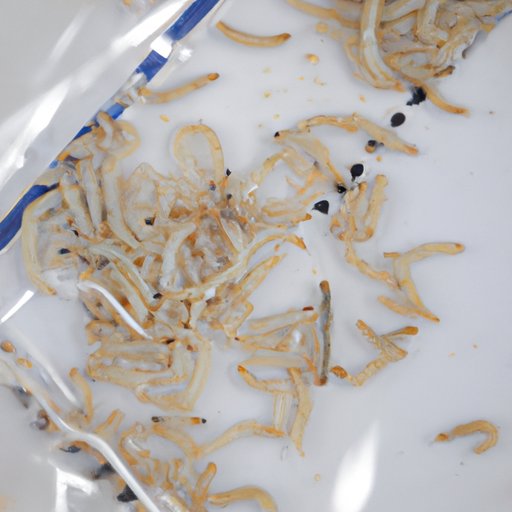
Introduction
Pinworms are a common intestinal parasitic infection that affects millions of people worldwide. They are usually transmitted through contact with fecally contaminated surfaces, and symptoms include anal itching, restlessness, and abdominal pain.
If you have experienced pinworms in the past, you are familiar with the discomfort that it causes. After undergoing treatment, there are several things you should consider to ensure a smooth recovery process. This article explores the possible aftermath of pinworm treatment, tips on how to navigate through it, and strategies for preventing reinfection.
The Pinworm Treatment Journey: What to Expect
The pinworm treatment process can be challenging, but it is essential for eradicating the parasites from your body. The most common form of treatment is the use of medication such as mebendazole or albendazole.
During the treatment process, you may experience side effects such as abdominal pain, nausea, and diarrhea. These side effects usually last between one to three days after treatment, but they can be prolonged in some cases. It’s essential to discuss any side effects with your doctor to avoid complications.
To help alleviate discomfort during treatment, you can try over-the-counter remedies such as anti-diarrhea medication or pain relievers. Additionally, it is important to stay hydrated and eat a bland diet to avoid worsening symptoms.
Life After Pinworms: A Guide to Recovery
After undergoing treatment, it’s normal to wonder how long it will take to make a full recovery. Although medication can eradicate the parasites, it may take a few weeks for your body to fully restore to its healthy state.
Managing symptoms post-treatment can be frustrating, but it’s essential for a smooth recovery process. Avoid itching or scratching the affected area, as this can lead to the reinfection of pinworms. Instead, try soothing methods such as using cold compresses or taking oatmeal baths to reduce itching.
Preventing reinfection is also crucial for a successful recovery. Change and wash bedding and pajamas regularly, and encourage everyone in your household to practice good hygiene, including thorough hand washing.
Overcoming Pinworms: Your Post-Treatment Companion
Dealing with the aftermath of pinworms can be challenging, both physically and emotionally. It’s crucial to have coping strategies as you adjust to life after pinworms. Engage in stress-relieving activities such as yoga or meditation, and seek emotional support from friends and family members.
For additional support, there are several resources available online or through your healthcare provider. Talking to a counselor or therapist can help you navigate through the recovery process and manage any residual feelings of anxiety or loneliness.
Pinworm Treatment: What You Need to Know About the Aftermath
It’s important to understand that undergoing pinworm treatment is not a one-time event, and there are several factors to consider when reintegrating back into your daily routines. Common questions people have about life after pinworm treatment include, “When is it safe to start school or work again?” and “What are the chances of reinfection?”
The truth is that everyone’s recovery process is different. Some individuals may feel better in a few days, while others may take weeks or even months to fully recover. The key is to listen to your body and seek medical advice if you’re unsure about anything.
To prevent reinfection, make sure to practice good hygiene, dispose of fecal matter carefully and wash bedding and clothes regularly. Additionally, avoid sharing personal items and make sure everyone in your household gets tested for pinworms.
Navigating Pinworm Recovery: Tips and Tricks
Lifestyle changes can help reduce the risk of reinfection and manage lingering symptoms post-treatment. Some tips and tricks include:
- Avoiding tight-fitting clothing that can cause irritation to the skin
- Eating a nutritious diet that includes plenty of fiber and fluids
- Taking probiotics or consuming fermented foods such as yogurt or kefir to improve gut health
- Using natural remedies such as tea tree oil or coconut oil to alleviate symptoms
It’s also crucial to continue with regular check-ups with your healthcare provider to ensure a complete recovery. With the right care and lifestyle changes, you can start enjoying life again after pinworms.
From Diagnosis to Remission: A Step-by-Step Guide to Post-Pinworm Treatment
Recap of the pinworm treatment process:
- Diagnosis and prescription of medication
- Use medication as prescribed for the recommended duration
- Manage side effects with over-the-counter medication and hydration
- Take steps to prevent reinfection and manage post-treatment symptoms
- Continue with follow-up appointments with your healthcare provider to ensure full recovery
By following these steps, you can successfully navigate through the aftermath of pinworm treatment and prevent reinfection. Remember to be patient and compassionate with yourself during the recovery process.
Conclusion
Pinworms are a common parasitic infection that can be challenging to deal with, but successful treatment is possible with the right care. After undergoing pinworm treatment, it’s crucial to be patient and engage in healthy habits that can promote recovery and prevent reinfection.
Seeking emotional and medical support can also be helpful as you navigate through your post-treatment journey. Remember, the goal is to recover fully and return to your regular routines, and investing in your health and well-being is key to achieving that goal.
If you are experiencing any symptoms or side effects post-treatment, seek medical help immediately.




